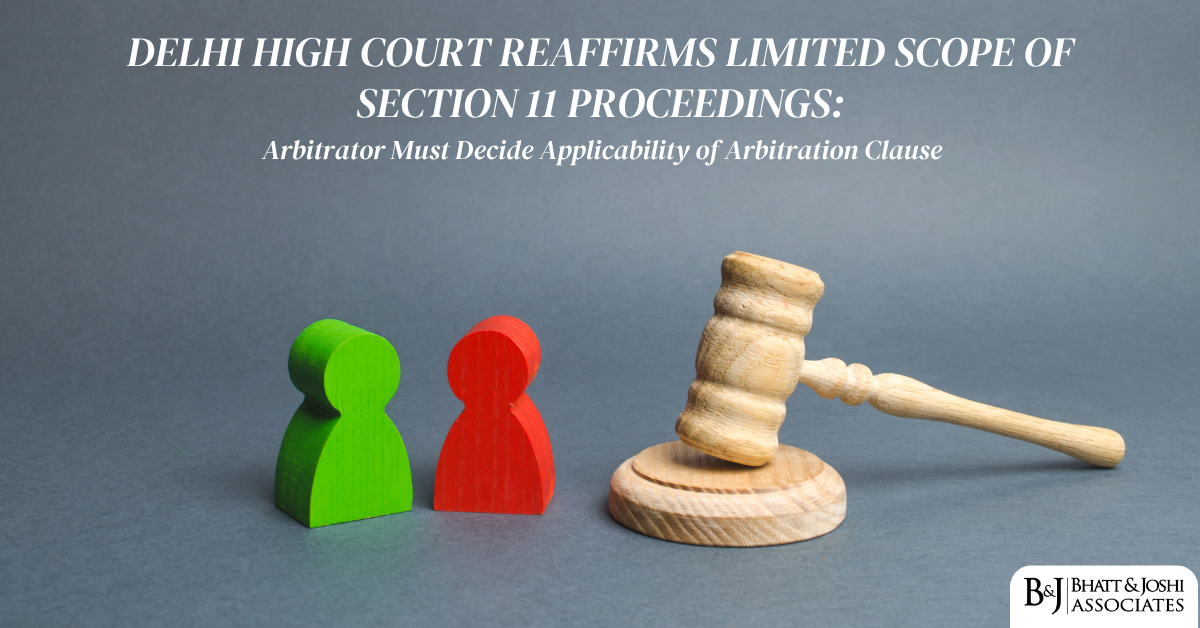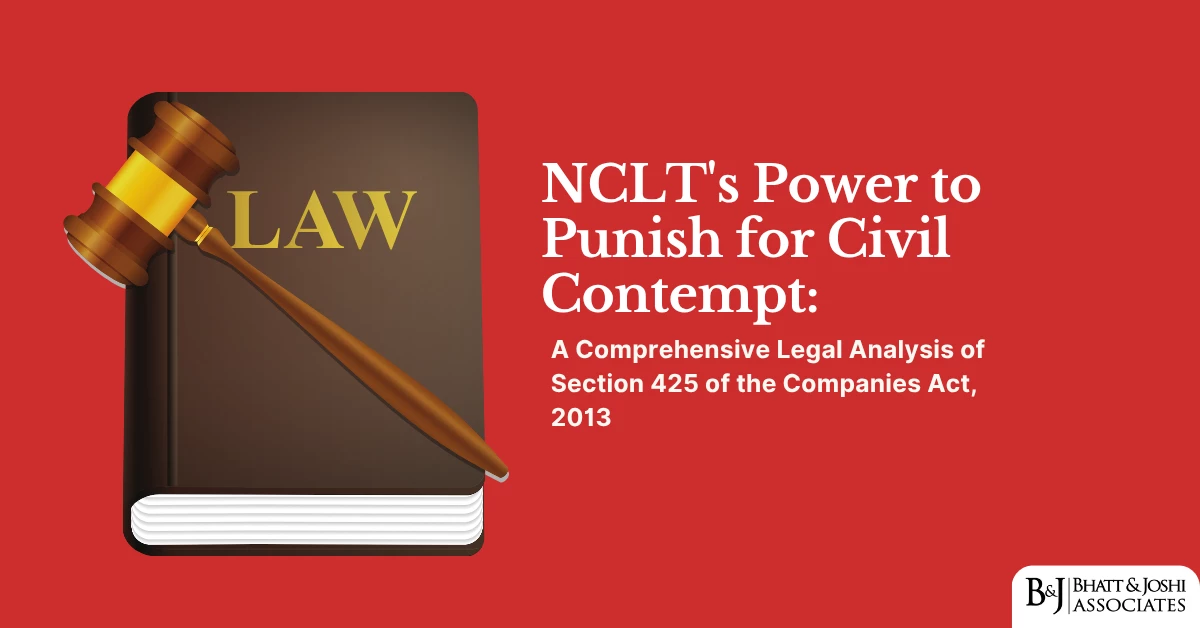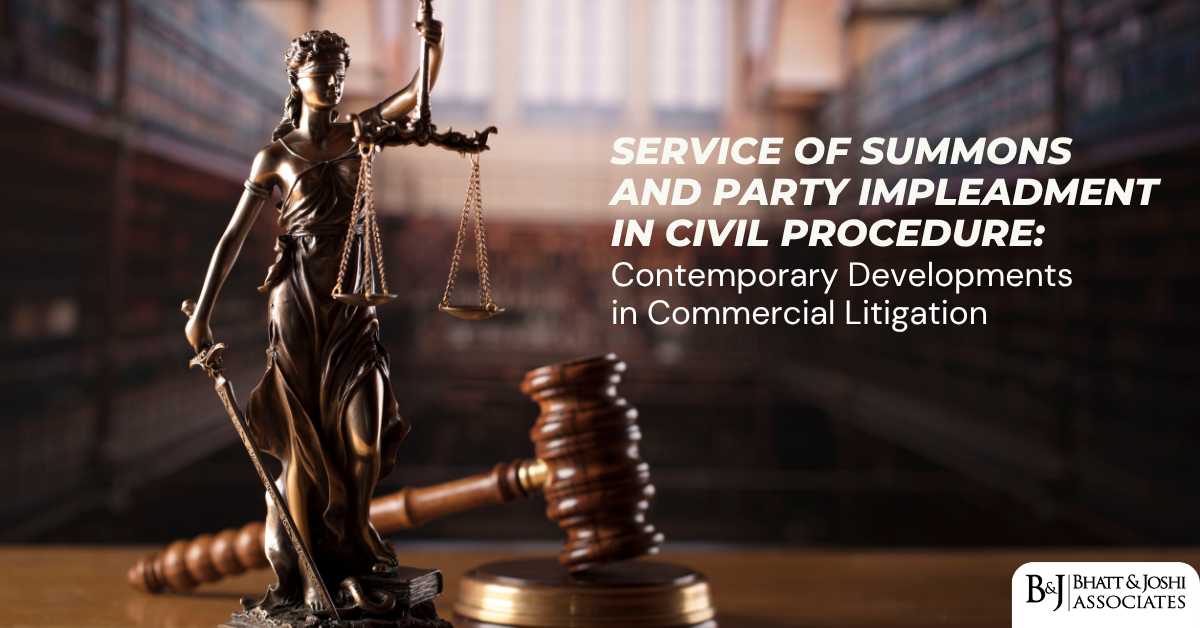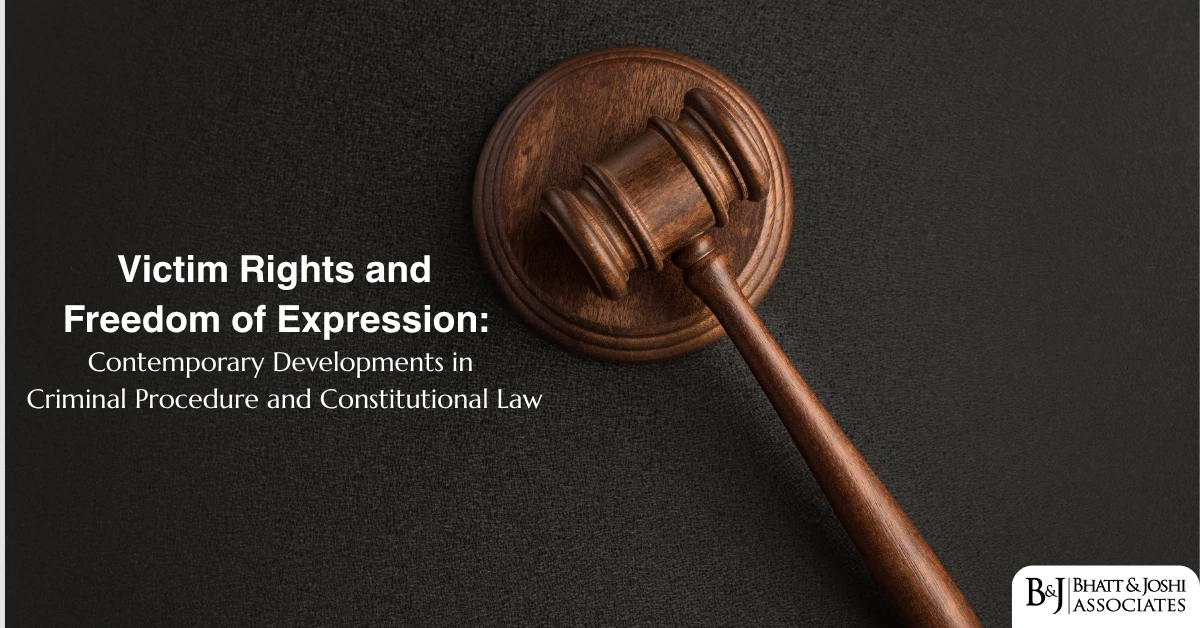
Introduction
The insolvency regime for personal guarantors to corporate debtors represents one of the most contentious and rapidly evolving areas of India’s insolvency jurisprudence. With the notification of provisions relating to personal guarantors under the Insolvency and Bankruptcy Code, 2016 (IBC) on December 1, 2019, the legal landscape underwent a fundamental transformation, establishing a specialized insolvency resolution framework for this distinct category of individuals. This development was particularly significant given the widespread practice in Indian corporate finance of promoters and directors extending personal guarantees to secure corporate debt—a practice that had previously created significant enforcement challenges when corporate borrowers faced financial distress. The Supreme Court’s interventions in this domain over the past few years have resulted in a series of landmark judgments that have progressively expanded Personal Guarantor Liability Post-Insolvency while clarifying the intricate relationship between corporate insolvency proceedings and personal guarantor obligations. These judicial pronouncements have addressed fundamental questions regarding the concurrent proceedings against corporate debtors and their personal guarantors, the impact of corporate resolution on guarantor liability, the relationship between the IBC and contract law principles governing guarantees, and the constitutional validity of treating personal guarantors as a distinct class. This article examines the Supreme Court’s expansive interpretation of personal guarantor liability post-insolvency context, analyzing landmark judgments, identifying key jurisprudential principles, and evaluating the practical implications for stakeholders. Through this analysis, the article aims to provide clarity on the current legal position while highlighting areas where further judicial development may be anticipated as this dynamic area of law continues to evolve.
Statutory Framework & SC Validation of Personal Guarantor Insolvency
The Notification and Its Implications of Personal Guarantor Insolvency Framework
The Ministry of Corporate Affairs’ notification dated November 15, 2019, which came into effect on December 1, 2019, operationalized specific provisions of the IBC in relation to personal guarantors to corporate debtors. This notification created a specialized insolvency resolution framework distinct from the general personal insolvency provisions, acknowledging the unique position of personal guarantors within the corporate insolvency ecosystem.
The notification specifically brought into force Sections 2(e), 78, 79, 94-187 (with certain exceptions), 239(2)(g), (h) and (i), 239(2)(m) to (zc), 239(2)(zn) to (zs), and 249 of the IBC in relation to personal guarantors to corporate debtors. Additionally, the Insolvency and Bankruptcy (Application to Adjudicating Authority for Insolvency Resolution Process for Personal Guarantors to Corporate Debtors) Rules, 2019, and the Insolvency and Bankruptcy Board of India (Insolvency Resolution Process for Personal Guarantors to Corporate Debtors) Regulations, 2019, were promulgated to establish detailed procedural frameworks.
This selective implementation created a significant distinction between personal guarantors to corporate debtors and other individual insolvents, reflecting the policy recognition of their distinct position in the corporate credit ecosystem. The framework established the NCLT as the Adjudicating Authority for personal guarantor insolvency matters, creating jurisdictional alignment with corporate insolvency proceedings.
The Constitutional Challenge: Lalit Kumar Jain Case
The selective notification immediately faced constitutional challenges, with personal guarantors arguing that it arbitrarily created a distinct class without legislative authorization and impermissibly bifurcated the IBC’s personal insolvency provisions. These challenges culminated in the landmark judgment of the Supreme Court in Lalit Kumar Jain v. Union of India & Ors. (2021) 9 SCC 321.
The Supreme Court comprehensively upheld the constitutional validity of the notification, delivering a judgment with far-reaching implications for personal guarantor liability post-insolvency. Justice Ramasubramanian, writing for the three-judge bench, observed:
“Personal guarantors are a separate species of individuals for whom the adjudicating authority has been specially designated as NCLT. The intimate connection between such individuals and corporate entities to whom they stood guarantee, as well as the possibility of two separate processes being carried on in different forums resulting in conflicting outcomes, led to carving out personal guarantors as a separate species of individuals… The parliamentary intention was to treat personal guarantors differently from other individuals.”
The Court rejected arguments that the government lacked authority to notify different provisions for different categories of persons, finding that Section 1(3) of the IBC explicitly conferred such power. Addressing the classification issue, the Court held:
“The neat division of the Code into three parts—the first dealing with corporate insolvency, the second with individual insolvency and bankruptcy (including personal guarantors), and the third containing common provisions—does not mean that the classification made in the impugned notification is impermissible. The intimate connection between personal guarantors and corporate debtors is mirrored in various provisions, including Sections 60, 128, 129, and 133 of the Indian Contract Act.”
This constitutional validation paved the way for the subsequent judicial expansion of personal guarantor liability post-insolvency principles.
Landmark Judicial Pronouncements on Substantive Liability
State Bank of India v. V. Ramakrishnan: Early Foundations
Even before the personal guarantor provisions were operationalized, the Supreme Court had begun addressing the relationship between corporate resolution and guarantor liability in State Bank of India v. V. Ramakrishnan (2018) 17 SCC 394. This case examined whether the moratorium under Section 14 of the IBC, applicable during corporate insolvency resolution process (CIRP), extended to personal guarantors of the corporate debtor.
The Supreme Court held that the moratorium under Section 14 applied only to the corporate debtor and not to the personal guarantors, allowing creditors to pursue enforcement actions against guarantors even while corporate proceedings were ongoing. Justice R.F. Nariman, delivering the judgment, emphasized:
“Section 14 refers only to the debtor mentioned in the application, making it clear that the moratorium is only in relation to the corporate debtor. The protection of the moratorium under Section 14 is for the corporate debtor alone, in line with the fundamental purpose of the Code—to ensure that the corporate debtor continues as a going concern while the creditors assess the options of resolution… Had the intention been to apply the moratorium to personal guarantors as well, the section would have explicitly stated so.”
This early decision laid important groundwork by recognizing the conceptual separation between corporate debtor and personal guarantor liability, despite their interconnected nature.
Committee of Creditors of Essar Steel v. Satish Kumar Gupta: Discharge Principles
The landmark judgment in Committee of Creditors of Essar Steel India Ltd. v. Satish Kumar Gupta & Ors. (2020) 8 SCC 531 addressed the critical question of whether approval of a resolution plan for a corporate debtor resulted in automatic discharge of the personal guarantor’s liability.
Justice Nariman, delivering the Court’s judgment, articulated a principle with profound implications for personal guarantor liability post-insolvency:
“Section 31 makes it clear that the guarantor’s liability is not extinguished by the approval of the resolution plan. The language of Section 31 specifically states that the approved resolution plan shall be binding on the corporate debtor, its employees, members, creditors, guarantors, and other stakeholders involved in the resolution plan. The inclusion of ‘guarantors’ among those bound by the plan establishes that far from discharging them from liability, the Code ensures they remain bound by the resolution outcome.”
The Court elaborated on the relationship between the IBC and the Indian Contract Act’s guarantee provisions:
“The liability of the guarantor remains separate and independent of the corporate debtor’s liability, consistent with Sections 128 and 133 of the Contract Act. The approved resolution plan does not operate as a discharge under Section 133, as it represents a statutory mechanism rather than a contract variation. The guarantor’s right of subrogation against the corporate debtor, while affected in practical terms, does not alter the fundamental nature of the guarantee obligation toward the creditor.”
This judgment established the critical principle that corporate resolution does not ipso facto discharge guarantor liability, preserving an important recovery avenue for creditors and shaping the framework of personal guarantor liability post-insolvency.
Phoenix ARC v. Ketulbhai Ramubhai Patel: Co-Extensive Liability Affirmation
In Phoenix ARC Private Limited v. Ketulbhai Ramubhai Patel (2021) 10 SCC 455, the Supreme Court further clarified the nature of guarantor liability, particularly examining the co-extensive nature of liability under Section 128 of the Contract Act in the IBC context.
Justice Indira Banerjee, writing for the Court, emphasized:
“The liability of a guarantor is co-extensive with that of the principal debtor unless the contract provides otherwise. Once the liability of the principal borrower has been established and a decree passed against him, the guarantor’s liability becomes actionable. There is no requirement to exhaust remedies against the principal debtor before proceeding against the guarantor unless the contract of guarantee provides otherwise.”
The Court specifically addressed the impact of corporate insolvency on this co-extensive liability principle:
“The mere initiation of CIRP against the corporate debtor does not dilute or modify the guarantor’s liability. Sections 128 to 134 of the Contract Act continue to govern the fundamental nature of guarantee obligations, with the IBC creating procedural mechanisms for enforcement rather than altering substantive liability principles. Once the corporate debtor’s liability is established, whether through adjudication or admission in insolvency proceedings, the guarantor cannot escape co-extensive liability except on grounds specifically recognized under contract law.”
This judgment reinforced that the guarantor’s liability remains fundamentally governed by contractual principles despite the statutory overlay of insolvency processes.
State Bank of India v. Mahendra Kumar Jajodia: Simultaneous Proceedings
In State Bank of India v. Mahendra Kumar Jajodia (2021) SCC OnLine NCLAT 193, the National Company Law Appellate Tribunal (NCLAT) addressed the question of whether proceedings against personal guarantors could be initiated while corporate insolvency was ongoing, a position later affirmed by the Supreme Court in subsequent judgments.
The NCLAT, drawing on Supreme Court precedents, held:
“There is no legal impediment to simultaneous initiation or continuation of proceedings against the corporate debtor and its personal guarantors. Section 60(2) of the IBC specifically enables applications relating to insolvency resolution of personal guarantors to be filed before the same Adjudicating Authority dealing with the corporate insolvency. This jurisdictional alignment acknowledges the interconnected yet distinct nature of these liabilities.”
The Tribunal further noted:
“Simultaneous proceedings serve the Code’s objective of comprehensive resolution of insolvency. They allow creditors to pursue legitimate recovery claims against both primary and secondary obligors without unnecessary procedural sequencing. The filing of claims in corporate proceedings does not create a bar against initiating separate recovery proceedings against guarantors, as these represent distinct legal pathways pursuing fundamentally separate obligors.”
This decision established an important procedural principle facilitating creditor recovery, subsequently reinforced by the Supreme Court in later cases.
Prahlad Bhai Patel v. Bangiya Gramin Vikash Bank: No Corporate Bar
In Prahlad Bhai Patel v. Bangiya Gramin Vikash Bank (2022) SCC OnLine SC 1557, the Supreme Court explicitly approved simultaneous proceedings against corporate debtors and personal guarantors, regardless of the corporate insolvency stage.
Justice Ravindra Bhat, delivering the judgment, held:
“Nothing in the IBC prevents the institution or continuation of proceedings against the guarantor under the personal guarantor insolvency provisions. The provisions of Sections 60(2) and (3), read with Section 179, clearly indicate that proceedings against personal guarantors can be filed or continued regardless of whether the corporate debtor is undergoing resolution or liquidation.”
The Court further emphasized the distinct nature of guarantor obligations:
“The guarantor assumes a separate and independent obligation to ensure payment, which remains enforceable regardless of the corporate proceedings’ status. The right of a creditor to pursue simultaneous remedies against both principal debtor and guarantor is well-established under contract law and remains undisturbed by the IBC framework, which instead facilitates coordinated adjudication through jurisdictional alignment.”
This decision removed any remaining doubts about procedural sequencing, confirming creditors’ right to pursue guarantors regardless of corporate proceedings’ status or outcome.
The State Bank of India v. Jah Developers Case: A Watershed Moment
Factual Background and Key Issues
The landmark judgment in State Bank of India v. Jah Developers Private Limited (2023) SCC OnLine SC 1379, delivered on September 28, 2023, represents the most comprehensive and expansive articulation of personal guarantor liability principles by the Supreme Court to date. The case involved multiple appeals addressing common questions about guarantor liability in relation to corporate resolution outcomes.
The central issue concerned whether a guarantor’s liability could exceed the amount specified in an approved resolution plan for the corporate debtor—a question of profound importance for creditors’ recovery prospects. Additional issues included whether guarantor liability could continue after a corporate resolution plan’s approval and the impact of Section 31 of the IBC on guarantor obligations.
The Court’s Expansive Interpretation
A three-judge bench comprising Justices Surya Kant, Dipankar Datta, and Ujjal Bhuyan delivered a unanimous judgment that substantially expanded guarantor liability principles. Justice Dipankar Datta, writing for the bench, held:
“A personal guarantor’s liability is not extinguished merely because a resolution plan has been approved in respect of the corporate debtor. The guarantor’s obligation operates independently of the corporate debtor’s financial status post-resolution. Most critically, the quantum of the guarantor’s liability is determined by the original contractual terms, not by the reduced amount accepted by creditors in the corporate resolution plan.”
The Court specifically rejected the argument that guarantor liability becomes limited to the amount specified in an approved resolution plan:
“The very essence of a guarantee is the promisor’s undertaking to be answerable for the debt or default of another person. The guarantor effectively promises: ‘if the principal debtor does not do what he has promised to do, I will do it for him.’ This fundamental obligation is not automatically modified merely because creditors have pragmatically accepted a reduced recovery through the corporate resolution process. The guarantor’s liability remains co-extensive with the principal debtor’s original contractual obligations, as guaranteed.”
Legal Reasoning and Implications on Personal Guarantor Liability
The Court’s reasoning drew on multiple legal foundations:
- Contract Act Principles: The Court emphasized that Sections 128, 133, and 135 of the Indian Contract Act remained fully applicable despite the corporate insolvency process. Justice Datta observed: “The statutory principles governing guarantees under the Contract Act continue to apply with full force unless explicitly modified by the IBC, which they have not been. Section 128 establishes co-extensive liability with the principal debtor’s original obligation, not with any subsequently reduced amount.”
- Section 31 Interpretation: The Court interpreted Section 31’s language making resolution plans binding on guarantors as preserving rather than reducing guarantor liability: “Section 31 ensures that guarantors remain bound despite the corporate resolution, preventing them from arguing that changes to the principal debtor’s obligations have automatically discharged their liability under general guarantee principles.”
- Section 133 Analysis: The Court specifically addressed Section 133 of the Contract Act, which provides for guarantor discharge when the creditor makes a contract with the principal debtor to give time or not to sue: “The approval of a resolution plan does not constitute a ‘contract’ between the creditor and principal debtor within the meaning of Section 133. It represents a statutory process with court approval rather than a voluntary contractual variation. Even if considered a contractual modification, the guarantor explicitly or implicitly consents to such variations when executing a comprehensive guarantee.”
- Subrogation Rights Consideration: The Court acknowledged that resolution plans might practically impact a guarantor’s subrogation rights but found this insufficient to modify liability: “While a guarantor’s practical ability to recover from the corporate debtor post-resolution may be affected, this commercial consequence does not alter the legal relationship between the guarantor and the creditor. The guarantor knowingly assumed this risk when providing the guarantee.”
The judgment conclusively established that personal guarantor liability post-insolvency remain liable for the entire guaranteed debt regardless of haircuts accepted in corporate resolution plans—a position with profound implications for recovery dynamics, particularly in promoter-guaranteed corporate debt scenarios.
Recent Developments and Emerging Doctrines
Kotak Mahindra Bank v. A. Balakrishnan: Mortgage Security Impact
In Kotak Mahindra Bank v. A. Balakrishnan (2023) SCC OnLine SC 211, the Supreme Court addressed how mortgage security provided by guarantors interacts with personal guarantor insolvency proceedings.
Justice V. Ramasubramanian, delivering the judgment, clarified:
“The existence of mortgage security provided by the guarantor does not preclude the initiation of personal guarantor insolvency proceedings. While secured creditors generally have options to relinquish or realize security outside the insolvency process, the availability of mortgage security does not change the guarantor’s fundamental status or liability. The personal insolvency process and mortgage enforcement represent parallel rather than mutually exclusive remedies.”
The Court further observed:
“Creditors are not obligated to first exhaust mortgage remedies before proceeding with guarantor insolvency. The choice between pursuing security enforcement, personal guarantor insolvency, or both concurrently remains with the creditor, reflecting the principle that guarantees and securities represent cumulative rather than alternative protections.”
This judgment preserved creditor flexibility in pursuing multiple recovery avenues simultaneously, reinforcing the expansive approach to guarantor liability.
R. Subramaniakumar v. L. Sivaramakrishnan: Guarantor Moratorium Scope
In R. Subramaniakumar v. L. Sivaramakrishnan (2023) SCC OnLine NCLAT 287, affirmed by the Supreme Court, the NCLAT addressed the scope of the moratorium under Section 96 of the IBC in personal guarantor insolvency proceedings.
The Appellate Tribunal held:
“The moratorium under Section 96 prohibits the initiation or continuation of legal proceedings against the personal guarantor regarding debts included in the insolvency petition. However, it does not prevent the filing of claims in the resolution process, the continuation of proceedings against other guarantors or co-obligors, or the realization of security interest over assets not owned by the guarantor.”
The judgment further clarified:
“Unlike the corporate moratorium under Section 14, the personal guarantor moratorium under Section 96 has a narrower scope, focused on the specific individual rather than all recovery actions related to particular debts. This allows coordinated but parallel recovery efforts against different obligors, consistent with the Code’s objective of comprehensive resolution while respecting the distinct legal status of different parties.”
This nuanced interpretation of the personal guarantor moratorium preserved important creditor rights while providing necessary breathing space for the resolution process.
Bank of Baroda v. DSC Ventures Private Limited: SARFAESI and IBC Interaction
In Bank of Baroda v. DSC Ventures Private Limited (2023) SCC OnLine SC 203, the Supreme Court addressed the interaction between personal guarantor insolvency and SARFAESI Act enforcement, particularly regarding secured assets.
Justice B.V. Nagarathna, delivering the judgment, held:
“The initiation of personal guarantor insolvency does not automatically stay SARFAESI proceedings against secured assets owned by the guarantor. Secured creditors retain the right to realize security interests outside the insolvency process by explicitly opting out under the applicable provisions. However, any excess recovery beyond the secured debt must be accounted for in the insolvency proceedings.”
The Court further observed:
“The preservation of secured creditor rights under both the IBC and SARFAESI represents the legislative recognition of security’s fundamental importance in lending arrangements. This does not prejudice unsecured creditors’ rights to proportional recovery from the guarantor’s unencumbered assets through the insolvency process.”
This decision further refined the understanding of how different recovery mechanisms interact in the personal guarantor context, maintaining the expansive creditor rights approach.
Practical Implications and Stakeholder Impact
Implications of Personal Guarantor Liability for Financial Creditors
The Supreme Court’s expansive interpretation of personal guarantor liability has substantially strengthened financial creditors’ position, creating several practical advantages:
In State Bank of India v. Kapil Wadhawan (2022) SCC OnLine NCLAT 388, the NCLAT highlighted these implications:
“Financial creditors now have enhanced recovery prospects through multiple concurrent avenues—corporate resolution, personal guarantor insolvency, and security enforcement. The judicial clarification that guarantor liability extends to the original debt rather than the resolution-reduced amount is particularly significant in cases with substantial haircuts, potentially allowing recovery of amounts far exceeding what was realized through corporate proceedings.”
The Delhi High Court, in Punjab National Bank v. Frost International Limited (2022) SCC OnLine Del 3854, further observed:
“The practical effect of the Supreme Court’s jurisprudence is to significantly strengthen the enforcement value of personal guarantees, particularly those given by promoters. Creditors can now pursue the full guaranteed amount regardless of compromises accepted in corporate resolution, fundamentally altering the leverage dynamics in restructuring negotiations where personal guarantees exist.”
Impact on Guarantors and Promoters
For personal guarantors, particularly promoters of distressed companies, the expansive liability interpretation creates significant financial vulnerability:
In Piramal Capital & Housing Finance Ltd. v. Gaurav Gopal Jalan (2023) SCC OnLine NCLT 156, the NCLT Delhi observed:
“Promoter-guarantors now face the prospect of liability for the entire original debt despite corporate resolution outcomes. This expanded liability, combined with the limitations on proposing resolution plans under Section 29A for promoters of defaulting companies, creates a challenging position where they may lose corporate control through CIRP while remaining liable for substantially more than the amount realized through resolution.”
The Bombay High Court, in Axis Bank v. Vidarbha Industries Power Limited (2022) SCC OnLine Bom 2475, noted:
“The practical consequence for guarantors is that corporate resolution no longer provides indirect personal relief. The guarantor’s liability remains independently enforceable to the original guaranteed extent, creating potential for substantial personal financial exposure even after corporate restructuring is complete. This represents a significant shift from the previous understanding where corporate resolution was sometimes viewed as indirectly limiting guarantor exposure.”
Resolution Professional Considerations
For resolution professionals in personal guarantor cases, the Supreme Court’s decisions create specific process implications:
In Narendra Kumar Maheshwari v. Union Bank of India (2023) SCC OnLine NCLT 563, the NCLT Kolkata observed:
“Resolution professionals in personal guarantor cases must now carefully assess the full original guaranteed debt rather than resolution-reduced amounts when evaluating creditor claims. This necessitates obtaining and verifying original guarantee documentation, loan agreements, and corporate resolution plan details to accurately determine the guarantor’s liability extent. The potential divergence between corporate resolution recoveries and guarantor liability creates additional complexity in claim verification.”
The NCLAT, in Vishnu Kumar Agarwal v. Piramal Enterprises Limited (2022) SCC OnLine NCLAT 426, further noted:
“Personal guarantor resolution professionals face the challenging task of developing viable repayment plans in scenarios where guarantor liability may far exceed available assets due to the expansive interpretation. This requires creative approaches to asset discovery, income assessment, and repayment structuring, potentially over extended periods, to address the full liability while maintaining basic economic functionality for the guarantor.”
Conclusion
The Supreme Court’s jurisprudence on personal guarantor liability post-insolvency has evolved rapidly from initial jurisdictional and constitutional questions to a comprehensive doctrinal framework that substantially expands guarantor obligations. Through a series of landmark judgments, particularly culminating in the Jah Developers case, the Court has established several foundational principles: guarantor liability remains independently enforceable despite corporate proceedings; simultaneous actions against corporate debtors and personal guarantors are permissible; corporate resolution does not discharge guarantor obligations; and most significantly, guarantor liability extends to the original guaranteed debt rather than resolution-reduced amounts.
This expansive interpretation represents a deliberate judicial policy choice prioritizing creditor recovery rights and contractual sanctity over guarantor protection. The Court has consistently emphasized the distinct yet interconnected nature of corporate and guarantor obligations, refusing to allow corporate resolution outcomes to indirectly limit guarantor liability. This approach significantly strengthens the practical value of personal guarantees in corporate lending while creating substantial financial exposure for guarantors, particularly promoters who provided personal guarantees for corporate debt.
The jurisprudential development reflects a broader policy orientation within India’s evolving insolvency framework—balancing business rescue with creditor protection while ensuring promoter accountability for corporate failure. By preserving full guarantor liability despite corporate haircuts, the Court has created powerful incentives for promoters to avoid corporate default and engage constructively in resolution processes, knowing they cannot escape financial responsibility through corporate restructuring alone.
As this area of law continues to develop, future judicial attention will likely focus on refining the interaction between personal guarantor liability post-insolvency and other recovery mechanisms, addressing procedural challenges in implementing the expansive liability principle, and potentially developing more nuanced approaches to guarantor resolution planning that balance maximum recovery with practical repayment capacity. The fundamental principle of expanded guarantor liability, however, appears firmly established as a cornerstone of India’s insolvency jurisprudence, with profound implications for corporate lending, guarantor risk assessment, and resolution dynamics in the years ahead.













